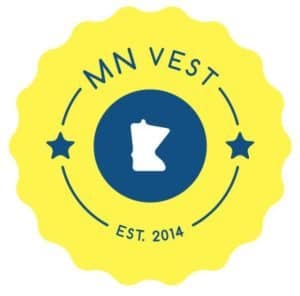The JOBS Act of 2012 was create with the recognition of the importance of providing funding to early stage ventures and entrepreneurs. Access to capital can be really hard. This is even more true if you happen to live outside of prominent hotbeds of innovation such as Silicon Valley and Silicon Alley. It is a prime objective of any Democratically elected government to provide access to opportunity regardless of your location, gender, or ethnicity. Internet finance, or Fintech, is the perfect vehicle to empower a segment of the population that has been widely underserved. As one platform recently stated, “good ideas are universal opportunity isn’t.”
Initial feedback regarding percolating up from the cohert of US crowdfunding platforms is encouraging but not quite there. At least not yet. Flyover country, as it is colloquially (and pejoratively) called, still struggles to match money to promising entrepreneurs. The typical story, that I have heard far too many times, is a promising venture hops a plane either east or west to seek their fortune. In the end, the rust belt remains oxidized. Sure. There are exceptions but more must be done. The public sector must do everything they can do create new businesses and welcome the fact that most will fail. As the mayor of a burgeoning and successful tech hub told this publication, it is far easier to start new businesses than to attract old ones. That’s a fact.
One emerging crowdfunding platform has taken this mission to heart with exceptional determination. The Silicon Prairie Portal and Exchange (SPPX) has staked a claim in the heart of the nation.
Silicon Prairie is currently operating in three different states: Minnesota, Wisconsin and Iowa. The platform is leveraging existing intrastate crowdfunding rules but has also been approved to offer securities under Reg CF – one of the federal crowdfunding rules so he may promote certain offerings across the nation.
CI recently had the opportunity to speak with the founder and CEO David Duccini, who is an entrepreneur in the online capital formation sector with really big plans. While providing access to capital to young companies is a global movement, Duccini is using technology to fuel innovation in a more localized way. Our conversation with Duccini is shared below.
 So how did your SPPX come to be? You are currently helping issuers raise capital in several states.
So how did your SPPX come to be? You are currently helping issuers raise capital in several states.
David Duccini: The inspiration for Silicon Prairie Portal & Exchange (SPPX) can actually be traced back to an attempted capital raise in the 2006 timeframe. I had a thriving Internet Service Provider (ISP) business in the Twin Cities (Minneapolis & Saint Paul, MN) area from 1994-2008. Towards the end, we had built out a carrier class VOIP offering under the brand “INTER.COM” (a domain we owned at the time). My first real exposure to angel and venture capital funding was during that era when I tried raising money via a Private Placement Memorandum (PPM) and roadshow. Locally it was akin to “shooting a game of pool with a piece of rope” … and from the coasts everyone just dismissed the region as a “fly over zone”.
Someone suggested I look at a Small Company Offering Registration (SCOR) as a path to solicit non-accredited investors.
I started getting all manner of “negative feedback” from angels and VC’s on how it would “blow up” my cap table, even though none of them were willing to invest. I now generally refer to that group these days as a “dying clan of inbred vampires”– respectfully of course.
[clickToTweet tweet=”‘I started getting all manner of “negative feedback” from angels and VC’s on how it would “blow up” my cap table, even though none of them were willing to invest. I now generally refer to that group these days as a dying clan of inbred vampires'” quote=”‘I started getting all manner of “negative feedback” from angels and VC’s on how it would “blow up” my cap table, even though none of them were willing to invest. I now generally refer to that group these days as a dying clan of inbred vampires'”]
I got involved with the Bitcoin space around late 2010 and immediately recognized the power of the distributed ledger to solve three classic problems every business has:
1) Authentic communications between issuer and stakeholder, solved by using digital signatures,
2) voting, as recorded on the chain and without the need for proxies, and
3) LIQUIDITY! First Peer to Peer and eventually on some kind of internet hosted exchange.
There were several attempts by various early alt coins to sell their tokens to the public, something that looked a lot like an unregistered security to me.
I started exploring “exemptions” and with the passing of the JOBS act in 2012 I knew the timing was near  where we would have a more viable means to raise seed funding and combine it with blockchain based distributed ledgers.
where we would have a more viable means to raise seed funding and combine it with blockchain based distributed ledgers.
In 2014, I started attending MNvest meetups in support of the Minnesota state level exemption. It was approved in 2015 but we had to wait a year for our Commerce department to draft the final rules which were made effective in June of 2016.
I built our Minimum Viable Product (MVP) and filed Silicon Prairie Portal & Exchange in November and was approved about a month later.
We launched the site by hosting our own raise in February 2017 (something permitted under MNvest) as a way to “eat our own dog food”, raising just over $250K under a SAFE offering.
We have hosted six deals to date ranging from breweries to mobile apps. We have since formed portals in Wisconsin and we’re the first portal operator in Iowa. We are also an SEC & FINRA registered funding portal under REG-CF and will have our first couple of offerings up in the next 30-45 days.
In using intrastate regulations in these states – what are the benefits? What about the challenges?
David Duccini: Intrastate based crowdfunding can be a lot more attractive since the rules are often less restrictive with regard to issuer requirements and non-accredited investor maximums. For example, most states permit an issuer to raise up to $1 million with their own financials and up to $2 million or even $5 million if they have been reviewed or audited. Under MNvest, a non-accredited investor is permitted to invest up to $10K per offering per year! And there is no restriction on how much accredited investors can invest.
One of the other benefits is that at least so far in MN, WI, and IA – all the regulators have agreed to let us host all the offerings on the same portal so long as we maintain the checks and balances with regard to state residency. So a Minnesota investor cannot “Invest Now” in an Iowa offering, they can only “Share Now” to socialize that the offering exists to their social network.
We have our sights set on Michigan next where today, on the books, is an exemption to permit establishing a secondary market. This is something we have filed for approval in Minnesota under the name “MNtrade” and hope to get up and running yet this summer.
Contrast all of this with Reg CF which has the tiered financial disclosure requirements above $107,000 and the frankly ridiculous restrictions on ALL investors based on the min / max of income vs net worth, including limiting accredited investors. Add in the max $1,070,000 limit and it’s no wonder the average raise is coming in around $250,000 – the cost of capital is just too high.
[clickToTweet tweet=”Contrast all of this with #REGCF which has the tiered financial disclosure requirements above $107K the frankly ridiculous restrictions on ALL investors … & it’s no wonder the average raise is coming in around $250K the cost of capital is just too high” quote=”Contrast all of this with #REGCF which has the tiered financial disclosure requirements above $107K the frankly ridiculous restrictions on ALL investors … & it’s no wonder the average raise is coming in around $250K the cost of capital is just too high”]
The reality is this: “All fundraising, regardless of type, is the slow conversion of your social capital into financial capital.”
The FIRST money that comes in is always “betting on the jockey not on the horse” – it’s people you know and who know you — they are betting on you first and on your idea second.
The SECOND money that comes in is “friends of friends” – they are betting on the idea and the investment opportunity.
The THIRD money is the network effect – the crowd – people who do not know you personally and are investing because they believe the business is investible.
The challenges are largely the same, though the interest and willingness to do business with the state regulators has been DRAMATICALLY different.
I said earlier it took us about a month to get approved in Minnesota. Since Iowa had the laws on the books, but no practical experience with any crowdfunding there, they asked us to wait until some revisions to the laws became effective this month to spin up operations. Wisconsin, by contrast, took just a couple of days to be made effective, in part because we could demonstrate our Minnesota operations.
FINRA on the other hand took an unprecedented 90 days to approve our Reg-CF portal, which required a 30 day extension to our application.
In my opinion, they wasted about 75 days trying to figure out if I was a bad actor or not because of my prolific work and experience in the blockchain space.
To this day, I’m still not sure if they understand their actual charter, roles and responsibilities, compared to say FINCEN.
I’ll also add that FINRA needs to get better at (mis)treating everyone equally.
 During our examination I was told that our Investor Education materials were not compliant and would never pass their AdReg review and that maybe we should just withdraw our application. When I pointed out that we had copied them essentially verbatim from a very large approved Reg CF portal they back-peddled pretty quickly.
During our examination I was told that our Investor Education materials were not compliant and would never pass their AdReg review and that maybe we should just withdraw our application. When I pointed out that we had copied them essentially verbatim from a very large approved Reg CF portal they back-peddled pretty quickly.
We may be reaching a point where an association of portal operators would be in our better collective interest, if for no other reason than to calibrate the regulators effectiveness. After all, “who watches the watchmen?”
In the end, it comes down to “cost of capital” – if you can raise under a state based exemption you absolutely should.
We’re now working on bringing significant automation capabilities to the SCOR exemption which does permit raises up to $5 million and can be filed in multiple states and practically has no hard restriction on how much a non-accredited investor can invest (there is of course “suitability”) and generally much more relaxed advertising rules.
Our Minnesota based MNvest portal explicitly permits us to host SCOR offerings and in talking with the regulators in Wisconsin and Iowa they are generally not opposed to having us do the same in those states.
How is it progressing being a FINRA approved Reg CF platform able to list offerings nationwide?
David Duccini: Our first few offerings are in the pipe and we are working with a company that has a niche market for artists that wants to leverage our Geppetto smart document system to lower the costs to make raises of just $25,000 worth trying under Reg CF.
We just filed our first fully automated Private Placement Memorandum under MNvest a couple weeks ago. With the exception of the business plan and financials, EVERYTHING ELSE was compiled from the database and our smart templates. It literally takes Geppetto fewer than 30 seconds to rip and render the 160 page offering document complete with intro letter to the regulator AND the state mandated application form! We already have the MN LLC and IRS SS-4 forms available within our system today which demonstrates a truly “single key-stroke” approach to Fintech and Legaltech.
We are extending this to SCOR exemptions right now and will be adding in the XML file for FORM-C later this summer. Our goal is try and demonstrate forming an entity in the morning and be crowdfunding later that same day!
Will you also be listing Reg D / Reg A+ offerings?
Fundamentally SPPX is a SAAS company — we believe that we can offer issuers compliant white-label or “walled garden” investment portals. Reg A+ is particularly interesting as we climb up the “exemption ladder” with Geppetto we hope to slash the costs to prepare the offering.
As it is today, what used to take our attorney 40-50 hours of “artisanal hand crafted” law now takes about 4-5 hours of just review. Seriously. Let that sink in…
You are moving into the blockchain space – can you elaborate on what you are planning?
David Duccini: It’s kind of the other way around. I am the primary developer of a cryptocurrency called 2GIVE which is traded on Bittrex, LiteBit.eu and others and was launched a couple of years ago and has a market cap that bounces around $4 – $5 million range. It was a total street credit play for me so in a lot of ways we are moving into securities via crowdfunding.
The core business we see ourselves in is something we call “Investor Relations as a Service” — the portal side is just the visible part, a “trojan unicorn” if you will.
We think the real business opportunity exists, managing cap tables which is why in part we have an SEC registered and approved Stock Transfer Agent (STA) entity called Silicon Prairie Registrar & Transfer. It allows us to do things we can’t do as a funding portal operator without being a Broker-Dealer like holding  securities and investor funds such as dividends et al. In fact, only an STA is permitted to remove restrictive legends from Stock Certificates.
securities and investor funds such as dividends et al. In fact, only an STA is permitted to remove restrictive legends from Stock Certificates.
We will be releasing our first blockchain for the SPHI SAFE units by the end of summer based on the 2GIVE chain I built, hopefully in concert with our MNtrade secondary market platform. Our offering closed February 16th, 2018 and set a six month intrastate only exchange window in place. In theory, starting August 16th the securities are eligible to be traded globally.
Investors absolutely have the right to liquidity but the legacy rules in place today are mostly silent on “how”. This is why in part we need to get a “no action” letter from our regulator to test that theory.
We are hoping to demonstrate why a blockchain based shareholder registry is superior to anything developed to date. It would give regulators unprecedented visibility into privately held companies as well as mark to market information for investors, including real-time trades performed by “insiders.”
Silicon Prairie is not just a platform. It is also a social movement, isn’t it?
David Duccini: We think that “the democratization of capital” certainly could be a social movement. We do have a lot to celebrate here in the “silicon prairie” where a high number of innovative, life changing products were first developed, including super computing, implantable medical devices like pacemakers, telecommunications, and let’s not forget that the web browser was invented here!
We’re also working hard to take the friction and costs out of spinning up self-directed IRA’s connected to crowdfunding investment opportunities. THAT dramatically changes the investor landscape.
I know a number of job-hopping millennials who have accumulated a few abandoned 401Ks who still live with their parents who should have the right to invest in the next Oculus Rift. Using a blockchain based distributed ledger coupled with a mobile app could revolutionize shareholder engagement and become the new benchmark in corporate governance!
Looking forward, where do you envision SPPX in the next few years?
David Duccini: As I mentioned earlier we are fundamentally a B2B SAAS company.
We’ve already licensed our portal stack off to two other Minnesota based operators and one in Colorado. In fact, in our business plan we even called out that we could exit the portal business ourselves in favor of servicing other portal operators under a revenue share model we have in place.
 Our approved Reg CF platform including our WSP and Investor Education content, as well as our experience working with FINRA, could be leveraged by other portal operators who desire a turnkey solution on the federal level.
Our approved Reg CF platform including our WSP and Investor Education content, as well as our experience working with FINRA, could be leveraged by other portal operators who desire a turnkey solution on the federal level.
In addition to rolling out more state based portals within the “Silicon Prairie,” we have been in preliminary discussions with the Office of the Comptroller of the Currency (OCC) to explore obtaining a national bank charter, ideally under the Special Purpose National Bank (SPNB) path or a National Trust Bank (NTB) charter. Barring that we’ll just look at buying a bank. Having a national bank charter would solve a lot of our intrastate escrow account challenges.
Once we have our Minnesota “MNtrade” secondary market online and operational we plan on filing with the SEC to establish a national Alternative Trading System (ATS) based in part on a limited volume exemption since we do not think there will be a high volume of exchange in exempt securities. If we HAVE to build or buy a Broker-Dealer we will.
We think our Geppetto smart document technology has the potential to materially disrupt LegalTech — having demonstrated slashing the amount of time and cost to produce a Private Placement Memorandum to nearly 1/10th is kind of mind-blowing. Our next output will be Smart Contracts, either on something like an Ethereum derivative chain or a whole new chain we’re working on called MORPHO, a Poly-Morphic Blockchain System that can interact with the real world.
There are so many actual exemptions that can be leveraged if you just know where to look (like sales to existing shareholders et al) that we think we can build a fully compliant and transparent funding engine that makes obsolete most of that legacy wall street and legal apparatus. If you’re a securities lawyer, I’d strongly encourage you to pick up some programming experience. The robots are coming.
[clickToTweet tweet=”‘If you’re a securities lawyer, I’d strongly encourage you to pick up some programming experience. The robots are coming’ #Legaltech” quote=”‘If you’re a securities lawyer, I’d strongly encourage you to pick up some programming experience. The robots are coming’ #Legaltech”]


